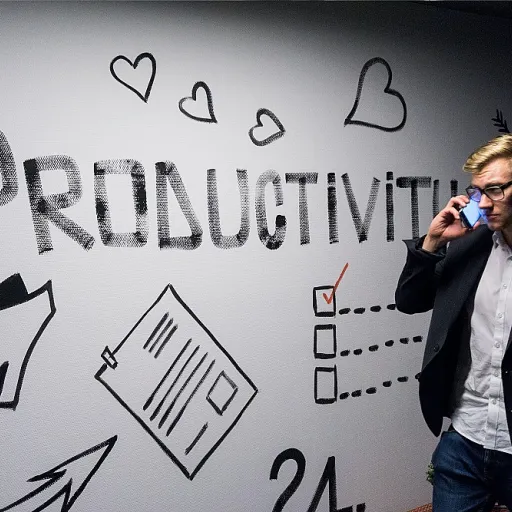
Crafting effective job descriptions and postings for optimal talent attraction
Developing a precise job description is the cornerstone of best hiring practices. A clear job description outlines the essential functions and skills required, ensuring potential candidates understand the expectations before applying. This transparency helps attract qualified candidates and reduces the number of unqualified applicants, streamlining the hiring process from the outset. Small business owners and large employers alike benefit from detailed job postings that specify the required skills, experience, and responsibilities. Including information about the work environment, salary history policies, and opportunities for growth provides applicants with a comprehensive view of the role. Social media platforms have become powerful tools for distributing job postings, expanding the reach to a broader talent pool. Employers should ensure that job postings are inclusive and free from bias, encouraging a diverse range of applicants to apply. By focusing on skills based requirements and essential functions, organizations can attract candidates who are genuinely suited for the position. Regularly updating job descriptions to reflect current needs and industry trends is a best practice that supports ongoing workforce development. This approach not only enhances the candidate experience but also strengthens the employer brand in a competitive employment market.
Implementing structured interview processes to reduce bias and improve outcomes
Structured interviews are a hallmark of best hiring practices, offering a consistent and fair method for evaluating candidates. By asking all applicants the same set of interview questions, employers can objectively compare responses and minimize the impact of unconscious bias. This approach is particularly effective in identifying the most qualified candidates based on skills and experience rather than subjective impressions. According to expert Dina DeMarco of Hueman People Solutions, "Unstructured, inconsistent interviewing can lead to poor hires and missed talent. Structured, role-specific interviews with consistent evaluation criteria improve hiring speed, quality, and fit." Employers should design interview questions that assess both technical skills and cultural fit, ensuring candidates align with the organization's values and essential functions. Incorporating skills based assessments into the interview process provides additional data points for making informed hiring decisions. Utilizing technology, such as video interviews and digital assessment tools, can further enhance the efficiency and consistency of the interview process. For more insights on optimizing your interview process, visit this comprehensive guide to structured interviews. Ultimately, a well-structured interview process not only improves the quality of hires but also enhances the overall candidate experience, fostering trust and transparency throughout the hiring journey.
Leveraging pre-hire assessments and background checks for informed hiring decisions
Pre-hire assessments have become an integral part of best hiring practices, enabling employers to evaluate candidates beyond their resumes. Cognitive and personality tests offer valuable insights into a candidate's potential for success in a specific job, helping employers make data-driven hiring decisions. These assessments are particularly effective in identifying skills based strengths and areas for development, ensuring candidates are well-suited for the essential functions of the role. Conducting thorough background checks is another critical step in the hiring process, with 91% of organizations confident that this practice improves the quality of hire. Background checks verify the accuracy of applicant information and help identify any issues that could impact job performance or workplace safety. Employers should establish clear policies regarding background checks and salary history inquiries to ensure compliance with employment regulations. Integrating these steps into the hiring process not only protects the organization but also demonstrates a commitment to fair and transparent hiring practices. For detailed guidance on implementing effective background checks, explore this resource on employment screening. By combining pre-hire assessments and background checks, employers can build a more reliable and qualified workforce, reducing turnover and enhancing organizational performance.
Promoting diversity, equity, and inclusion through intentional hiring practices
Diversity, equity, and inclusion (DEI) are increasingly recognized as essential components of best hiring practices. A diverse workforce brings a range of perspectives and experiences, driving innovation and improving business outcomes. Seventy-six percent of job seekers and employees consider workforce diversity a critical factor when evaluating employment options, highlighting the importance of inclusive hiring practices. Employers can promote DEI by implementing standardized screening processes and structured interviews, which help reduce bias and ensure all candidates are evaluated fairly. The Rooney Rule, for example, requires organizations to interview minority candidates for leadership positions, fostering greater diversity in the talent pool. Social media can also be leveraged to reach underrepresented groups and expand the pool of potential candidates. Employers should regularly review their hiring practices to identify and address any barriers to diversity, ensuring that job postings and interview questions are inclusive and accessible. Building partnerships with educational institutions and community organizations can further enhance talent acquisition efforts, creating pathways for a broader range of applicants. By prioritizing DEI, organizations not only attract top talent but also create a more equitable and dynamic work environment.
Utilizing technology and social media to expand the talent pool
Technology has transformed the landscape of talent acquisition, offering innovative tools to enhance the hiring process. Artificial intelligence (AI) is increasingly used to automate resume screening, identify qualified candidates, and predict candidate success based on skills and experience. While AI can improve efficiency, employers must remain vigilant about potential bias in algorithms and ensure ethical implementation. Social media platforms provide access to a vast talent pool, enabling employers to connect with both active and passive job seekers. Sharing job postings and company culture content on platforms like LinkedIn, Twitter, and Facebook can attract a diverse range of applicants. Employers should also utilize applicant tracking systems to manage the hiring process, streamline communication with candidates, and maintain detailed records of each applicant's progress. These systems support best practices by enabling consistent screening and interview processes, reducing the risk of bias and improving the overall candidate experience. Regularly analyzing hiring data helps employers refine their strategies and identify opportunities for improvement. By embracing technology and social media, organizations can enhance their talent acquisition efforts and stay competitive in a rapidly evolving employment market.
Continuous improvement and accountability in hiring practices
Effective hiring practices require ongoing evaluation and adaptation to meet changing workforce needs. Employers should regularly review their hiring process, from job postings to final hiring decisions, to identify areas for improvement and ensure alignment with organizational goals. Gathering feedback from candidates and employees provides valuable insights into the candidate experience and highlights opportunities to enhance the process. According to Shannon Gabriel of TBM Consulting, "Managers should own the decision, admit the hire was a mistake, and move forward quickly. Failing fast can save the company, department, and other employees the headache." This mindset encourages accountability and supports a culture of continuous learning. Small business owners and large organizations alike benefit from tracking key metrics, such as time-to-hire, quality of hire, and workforce diversity, to measure the effectiveness of their hiring practices. Implementing regular training for hiring managers on topics like bias reduction, interview techniques, and employment law helps maintain high standards and compliance. By fostering a culture of accountability and continuous improvement, employers can ensure their hiring practices remain effective, equitable, and aligned with best practices.
Key statistics on best hiring practices
- 91% of organizations are confident that running background checks improves the quality of hire.
- 76% of job seekers and employees consider workforce diversity a critical factor when evaluating employment options.
Frequently asked questions about best hiring practices
What are the benefits of structured interviews in the hiring process?
Structured interviews provide a consistent framework for evaluating all candidates, reducing bias and ensuring fair comparisons. This method helps employers identify the most qualified candidates based on skills and experience, improving the overall quality of hires.
How can employers ensure diversity and inclusion in their hiring practices?
Employers can promote diversity and inclusion by standardizing screening and interview processes, using inclusive job postings, and leveraging social media to reach a broader talent pool. Regularly reviewing and updating hiring practices helps identify and address barriers to diversity.











